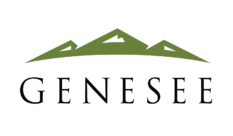Evacuate

Evacuate to save your life. The first rule of evacuation is: Leave when you feel uncomfortable, even if you haven’t received a notification to leave.
DO NOT wait until your neighborhood looks like this to evacuate!
Having evacuation preparations and checklists complete (and knowing where they are) is critical to getting out safely, getting out without the post-evacuation regret of leaving some critical thing behind. Evacuation is when your efforts in the Inventory phase will pay off in ways that you don’t expect, and you probably can’t imagine, before the wildfire appears.
A Red Flag Weather Warning may be a good time to practice for an evacuation. Locate your Emergency Evacuation checklist and walk through each of the steps, locating each of the items. (You don’t have to gather and pack them, just determine if they are where you expect them.) Also talk through the steps in the checklist with your family to secure your home and get out safely.
This is general evacuation information, for any “Emergency.”
In Genesee, we tend to think of evacuation in the event of wildfire, but there may be other instances that call for evacuation readiness or an actual evacuation. These include, but are not limited to, a nearby structure fire, severe weather, or a danger to health or life (like a hazardous materials spill).
Prepare to evacuate well before you must.
Well before the need to evacuate occurs:
- Inventory your possessions and store the inventory offsite.
- Complete your Wildfire Action Plan that details your evacuation plans and place the plan in an easy-to-remember location.
- Pack your GO BAG and place it in an easy-to-access location.
- Know how to open your garage door if the power is out.
When fire conditions indicate possible evacuation:
- Post your Wildfire Action Plan and Wildfire Evacuation Checklist where all the family can see them.
- Park your car facing out of the garage or driveway, so it is easier to pack and leave.
- Bring all your evacuation items (GO BAGs, important documents, possessions…) to a central location or know where each one is, for quick loading of your vehicle.
- Have your evacuation clothing ready to wear.
- Bring any combustible items in your yard (patio furniture, umbrellas…) into your garage. Placing such items well away from your house and trees may help but may also add to the wildfire fuel.
Evacuate your family and critical possessions when notified or when you feel uncomfortable.
- Load your evacuation items in your vehicle following the order in your Wildfire Action Plan.
- Notify family members who are not with you of your evacuation plans and remind them of where to meet.
- Confirm that all windows and doors (including interior doors) in your house are closed (if that can be easily and quickly done). You need not worry about turning off gas and electricity as in a wildfire Xcel Energy will turn off both for the entire neighborhood.
- LEAVE with all family members and pets in the fewest number of vehicles, following any directions from emergency personnel along the evacuation route.
- NOTE: Some sites also specify the clothes to wear when you evacuate: cotton and other natural fibers, closed shoes, hats, gloves, glasses, and masks. These assume that the evacuation is during a very close fire. Consider the conditions through which you will be going while you prepare to evacuate.
Evacuation resources: Information to help you get out safely with everything and everyone you expected.
See “Create your checklists” and “Checklist resources” in the Inventory section of this website.
Prepare Your Wildfire Action Plan
Evergreen Rotary Wildfire Ready See Steps 3 and 4 for two 1-page general checklists for evacuation preparation and execution. These are a good place to start to create checklists specific to your family’s’ needs. Eliminate items that don’t pertain to you and add items to meet your needs and situation.
Wildfire Evacuation Checklist
Living with Fire A nice 1-page summary of all the things to consider when evacuating. This is a very good document to use as the base for your own personalized checklist. Eliminate the items here that you don’t need and add items that pertain to you.
Wildfire Evacuation Checklists
Genesee Fire Protection District Several checklists that have been vetted by Genesee Fire Rescue.
Remember that most emergency checklists have been created to meet a “worst case scenario” and often include steps that meet expected local conditions. Use those checklists as the basis for your own family’s location and situation to create checklists that meet your specific needs.
